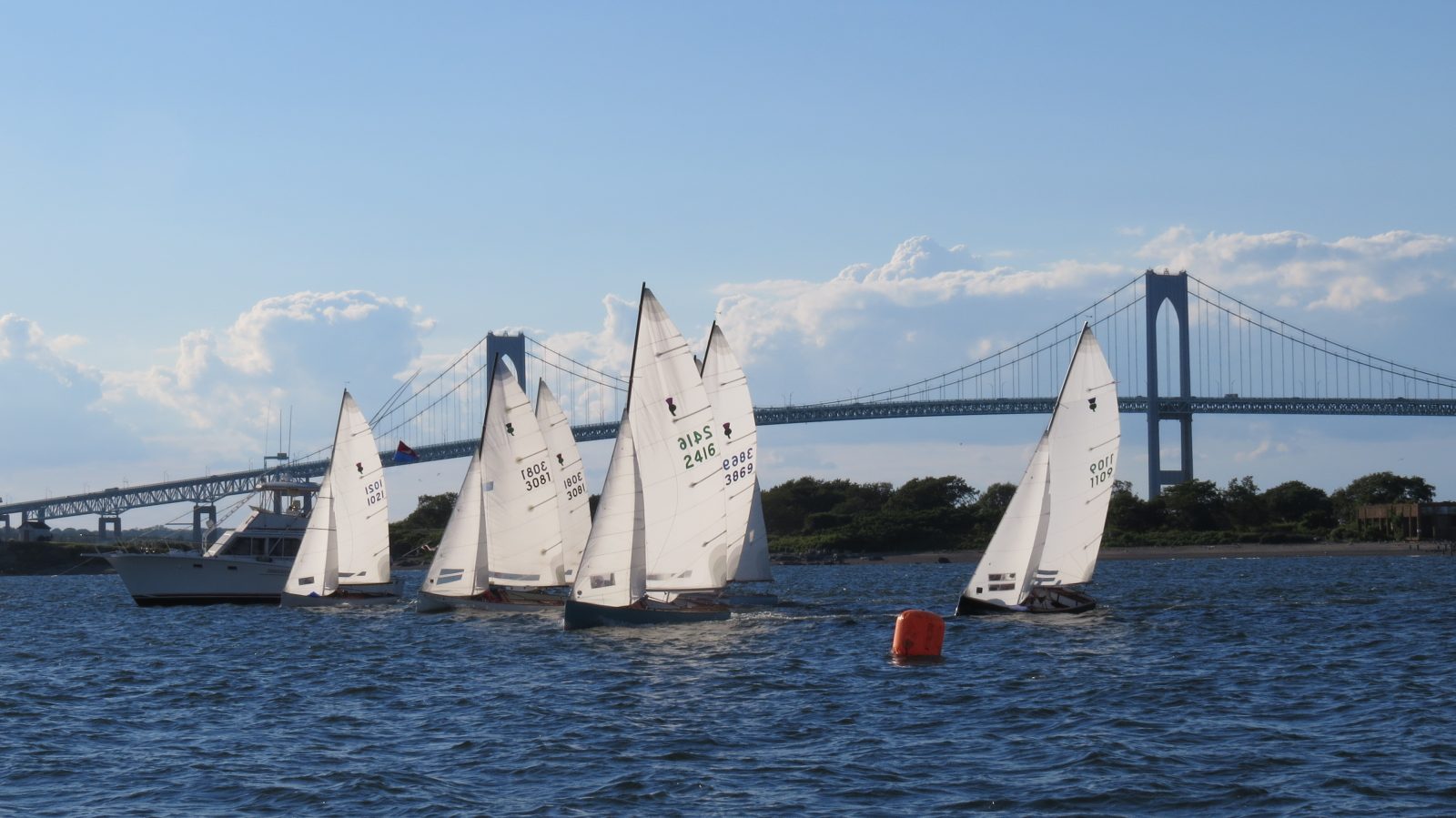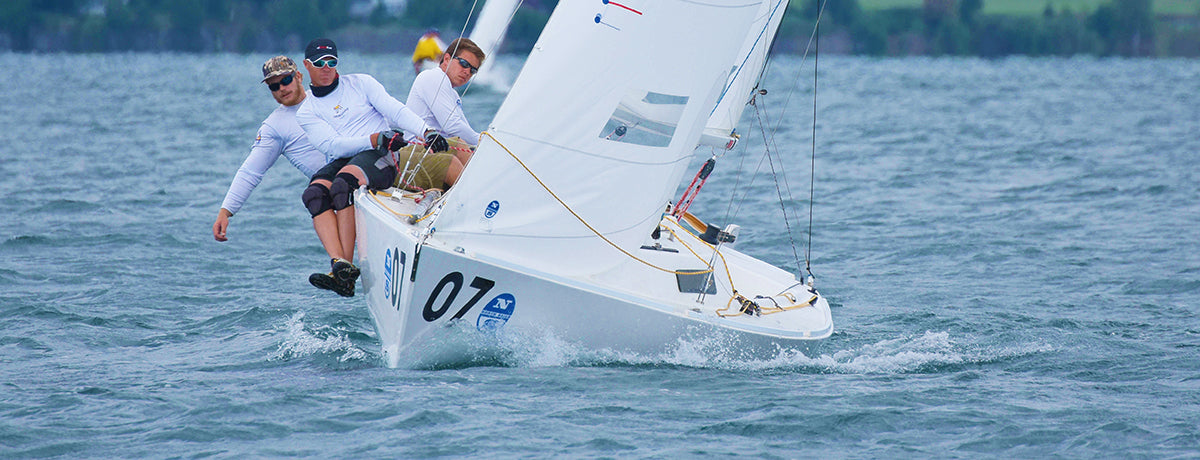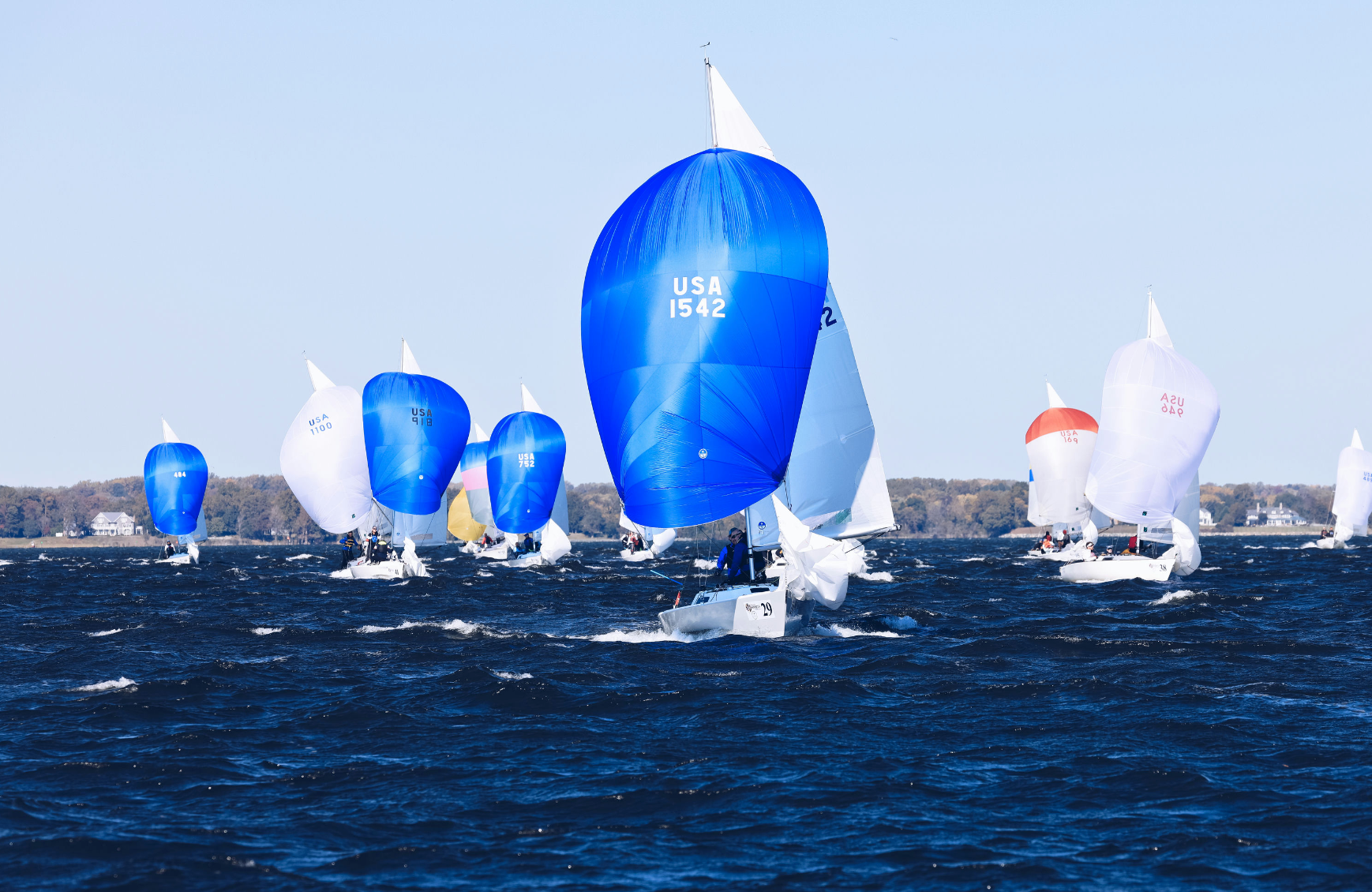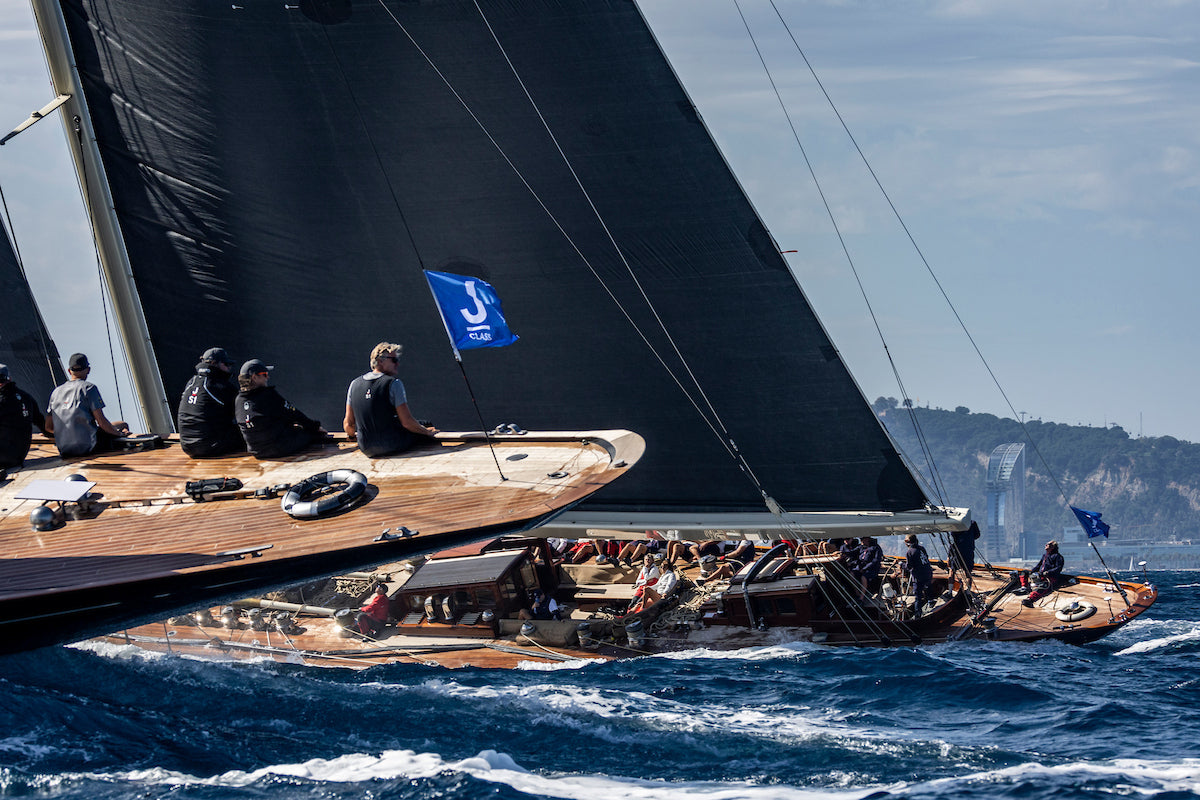FROM THE EXPERTS: LOCAL KNOWLEDGE TIPS FOR RACING ON NARRAGANSETT BAY
LOCAL KNOWLEDGE TIPS FOR RACING ON NARRAGANSETT BAY
Catch your racing tips from J/22 World Champion and North Sails Designer, Mike Marshall
When sailing in Newport, the wind will either blow from the North, or we’ll get the trademark Southwest sea breeze. The other wind directions, East and West, are far less common.
If you are sailing on an offshore circle in the sea breeze, the typical wind direction is between 215-255 degrees. The general rule of thumb is if it blows left of that, you end up going to the left, and likewise, if it trends to the right side of that range, you’ll end up hitting the right side of the course. As the sea breeze builds, it tends to fill from the ocean. On the first beat of a race in filling sea breeze, you’ll want to be on the tack that leads you farther into the ocean. The current will either be coming in or leaving the bay. As it leaves the bay, it will either curve to the left and into Block Island Sound, or curve right. It’s always smart to get out there early and look at the lobster pots around the course – the further you sail up the course, the more thorough your understanding will be of the tide on that day.
Racing on the inshore circles will be more current sensitive. The ebb and flow will switch close to the times posted, but keep in mind we had a lot of rain on Friday. As a general rule of thumb, the current tends to switch on the Jamestown side first, close to the shore, and then move across the bay. Probably the last area to completely switch is the channel. Again, lobster traps and boys are plentiful and offer a great read on what is happening with the current. Whoever catches that current switch first, and makes the most of it, are going to be the boats leading the race. There are a couple of places you can hide from the current – shallow areas and beneath Rose and Gould Island (depending on your racing area) are examples.
Pressure south of Rose and Goat Islands will be shifty in the Northerly direction and fairly steady in the sea breeze. The current will largely dictate your decisions.
Courses North of the bridge can be a little tricky. In Potters Cove, the southerly breeze will partially funnel over the land and drop in on the south side of the course. You can end up with two breezes – one that is coming down the bay and under the bridge (this tends to be a little bit more left), and one that fills over Jamestown and into Potters Cove (this tends to be a little more right). A good rule of thumb is to figure out which breeze the windward mark sits in and, depending on how much the current is helping our hindering you, working the same breeze the windward mark is in will get you that last shift to cross in.





























